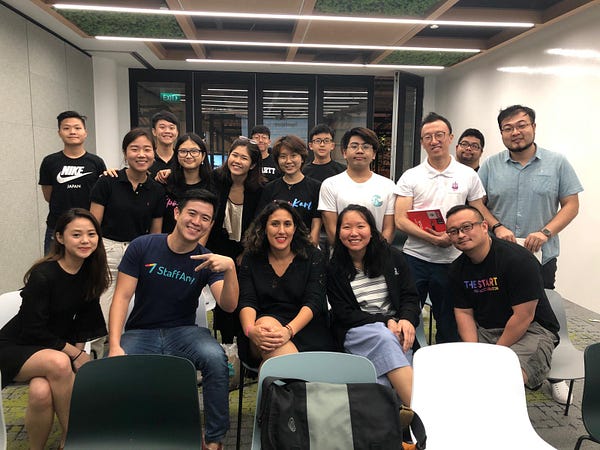Five examples of AI in healthcare and how this collaboration will grow more important in the coming years

The healthcare industry is undergoing a tumultuous period of change where it’s being forced to evolve in the face of rapidly growing consumer demand.
With an increasing global average lifespan, rising healthcare demands have pushed modern hospitals and healthcare providers to their limits and forced to call upon any tool that can help them provide positive patient outcomes.
Over the past few years, it’s become obvious that AI has become nearly unrivalled in its ability to help hospitals and medical experts heal patients while cutting costs.
Here are five powerful examples of AI in healthcare, and why this technology will only grow more important in the forthcoming years.
1. Flagler Hospital is using AI to create health-enhancing Clinical Pathways
For those who doubt the ability of hospitals around the nation to innovate and make use of AI, look no further than Flagler Hospital, where healthcare professionals have harnessed the power of intelligent machines to create care-enhancing clinical pathways.
They have also drastically cut the costs of providing healthcare. The Saint Augustine, Florida-based hospital has decided to use AI to help improve the treatment of pneumonia, sepsis, and other high-cost conditions to wondrous effects.
The AI program analyzes clinical pathways for patients with high-cost conditions and recommends the most efficient option for doctors; it’s already expected to save at least US$1,356.35 per pneumonia patient.
As hospitals become swamped with more and more patients, they’ll find it necessary to follow in the footsteps of Flagler Hospital and employ AI programs that help them deal with high-cost conditions.
Ultimately, expediting the treatment process and saving hospitals money could be the most impactful way that AI comes to change the future of the healthcare industry.
2. Machine learning is supercharging the medical diagnostics process
Medical diagnostics are about to get a lot easier than ever before thanks to the help of machine learning applications, which are supercharging the ability of healthcare professionals to comb through huge reams of patient data in pursuit of crucial insights that could mean the difference between a healthy patient and a suffering one.
According to the Institute of Medicine at the National Academies of Science, Engineering, and Medicine, diagnostic errors contribute to approximately 10 per cent of all patient deaths. This means that any innovation to help make the diagnostics process more efficient is sorely needed in the modern healthcare system.
Hospitals can use AI for a wide range of purposes when it comes to diagnostics; chatbots, for instance, can have friendly conversations with patients over the phone or computer before they actually head into a hospital, and thereby prevent any hospital errors later on.
This will cut down the number of people who needlessly head into the ER when they’re only suffering from a minor condition, and chatbots could also help lure in patients who are otherwise untrusting of doctors and medical experts.
3. AI is making analysing patient records easier
Combing through a huge sum of patient data is never easy, as any medical professional can attest to. In the future, this process could be greatly expedited by injecting AI into the works, as a number of healthcare providers are already finding machine learning techniques useful when it comes to analyzing patient records.
A recent research report demonstrates that systems like IBM’s Watson can be used to screen literally millions of patient records for clues to identify who may be at a higher risk for cancer.
More hospitals and medical researchers will doubtlessly come to view the application of machine learning to patient records as an essential part of digitising their operations and moving headfirst into the 21st-century healthcare environment.
4. Medical image interpretation is about to get better
Interpreting medical images, x-rays, and scans aren’t easy, yet it’s a crucial part of monitoring patient health and ensuring that diseases are detected early on.
As another recent research paper on AI and its application into various areas uncovered, images of brain tumours can be analysed by machine learning programs that learn to recognise common trends and can recommend useful insights to researchers.
Also Read: Solidifying Singapore’s standing as a leading global blockchain hub
The future of medical image interpretation is going to become dominated by intelligent machines – human workers in this area can legitimately fear automation, as software is likely to prove much more efficient at image analysis and pattern recognition than the human brain.
5. Robots are becoming surgery assistants
Perhaps the starkest example of AI in healthcare is how robots are slowly but steadily becoming surgery assistants. While some healthcare professionals dismissed the idea of AI being useful in the operating room, a number of medical procedures have already been conducted with AI-assisted robotics playing a key role in the process.
The New York Post has already reported on one of the world’s earliest examples of micro-surgery conducted with the assistance of AI, and these instances are only likely to become more common as the tech becomes cheaper and more widely accessible in the medical industry.
—
Image by aleutie
e27 publishes relevant guest contributions from the community. Share your honest opinions and expert knowledge by submitting your content here.
The post Fully integrating AI and healthcare is closer than you think appeared first on e27.







 Singapore-based VC arm of
Singapore-based VC arm of